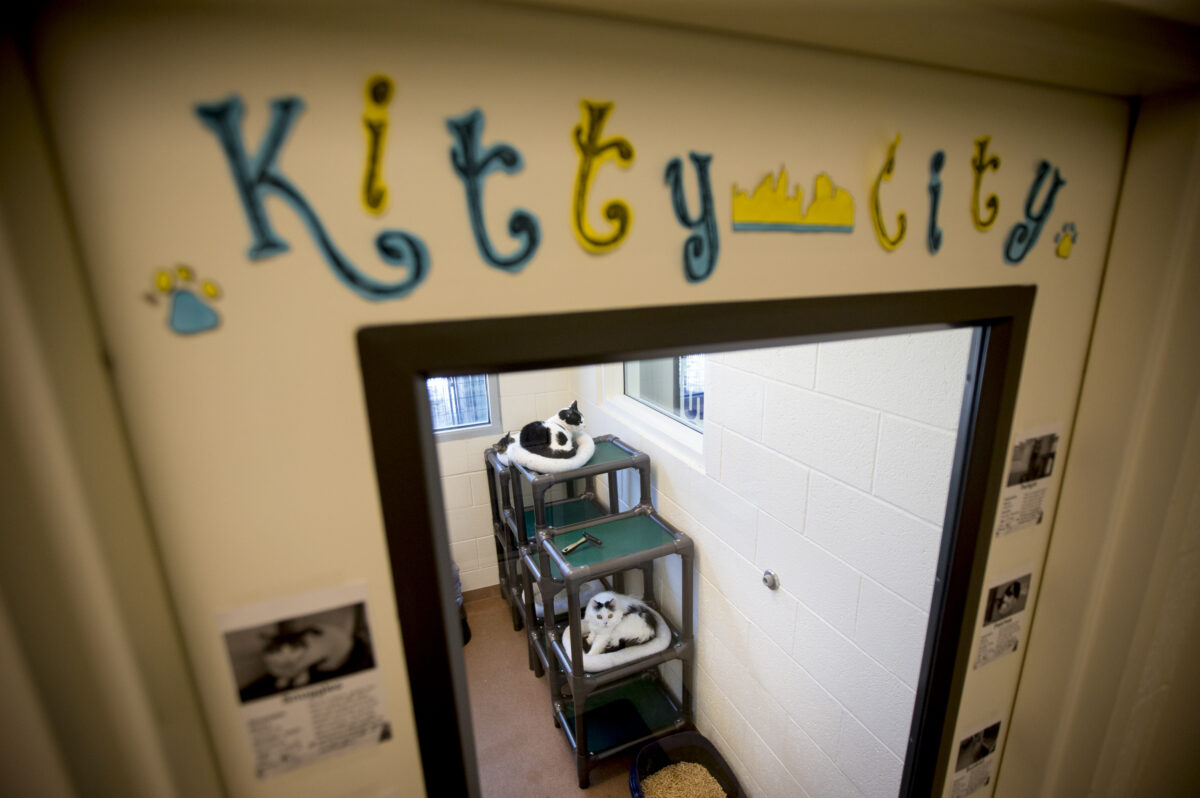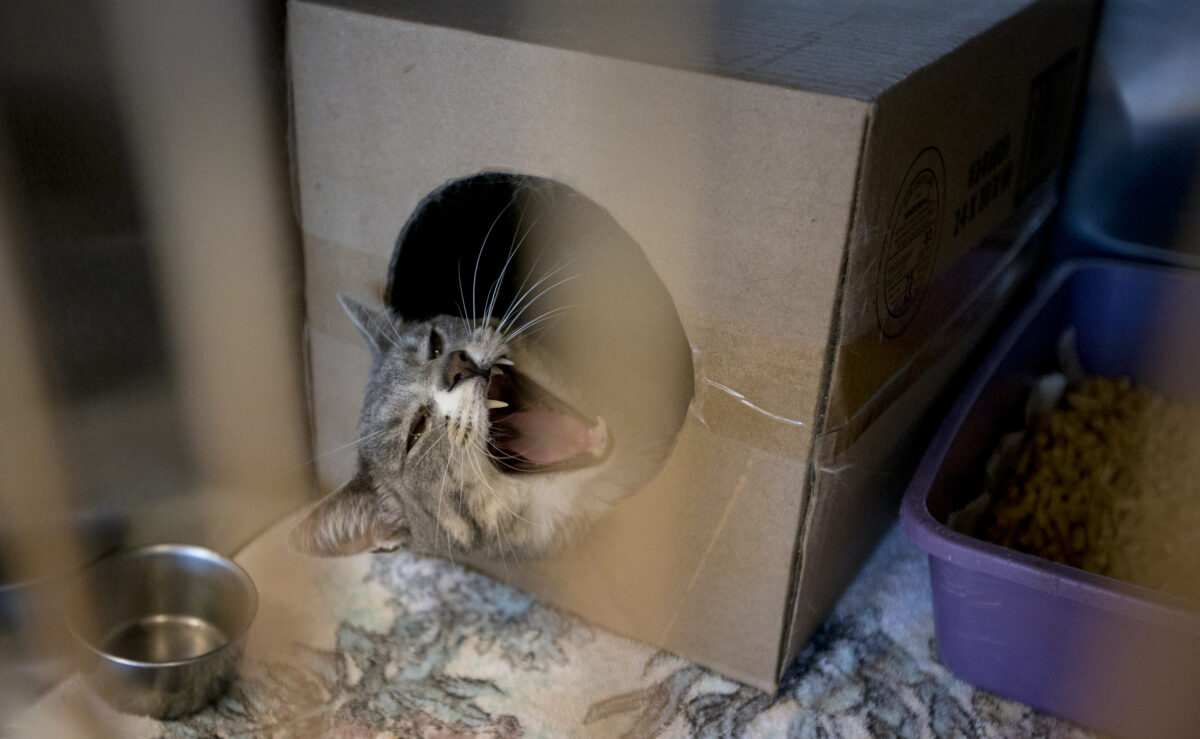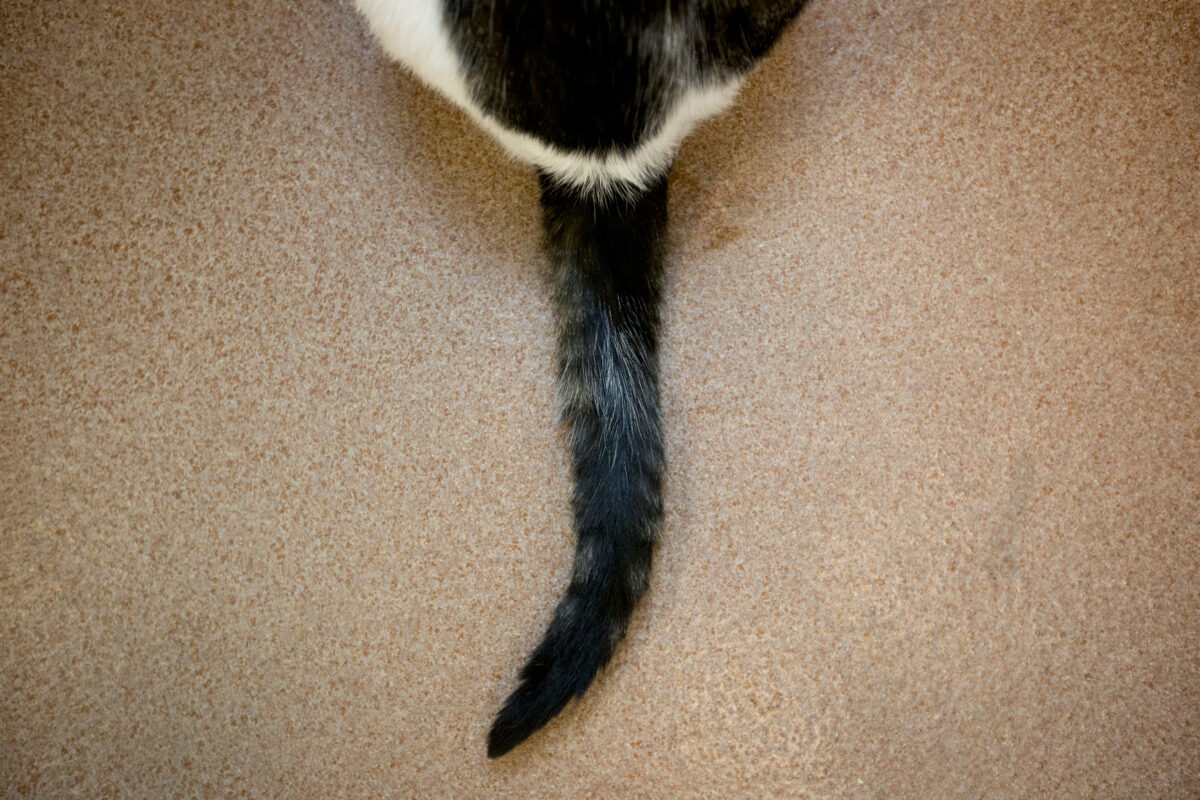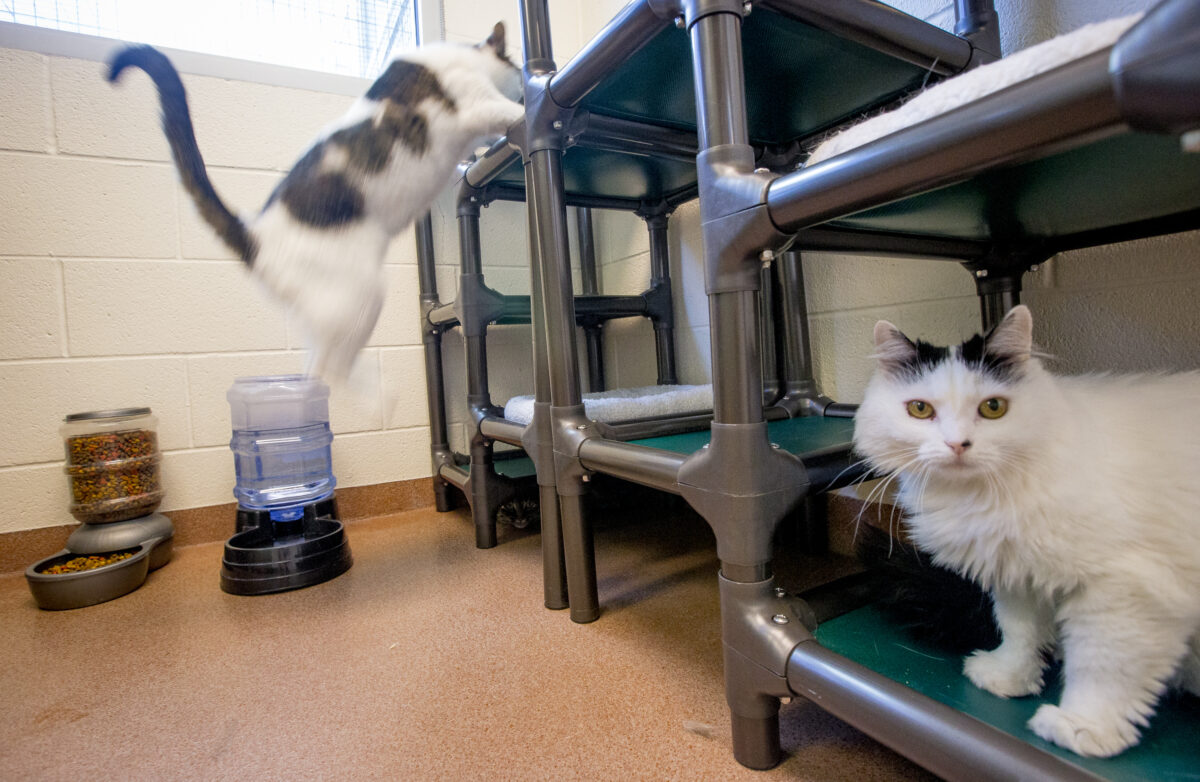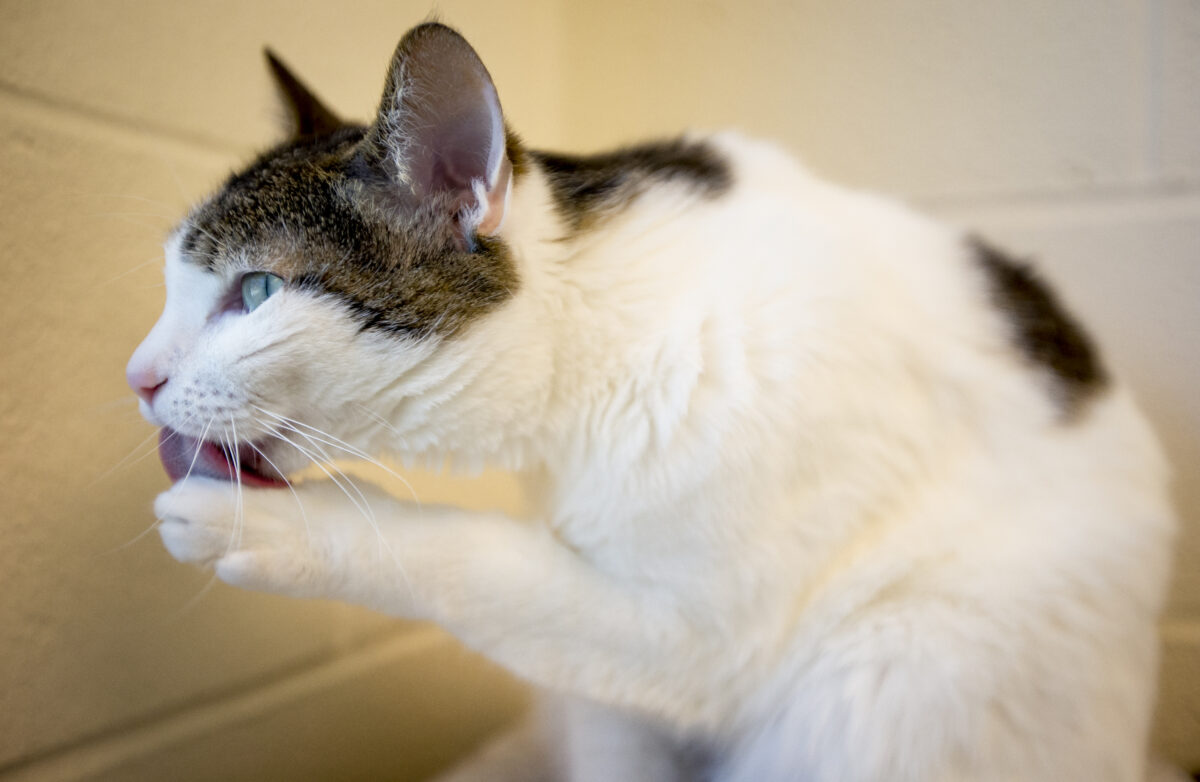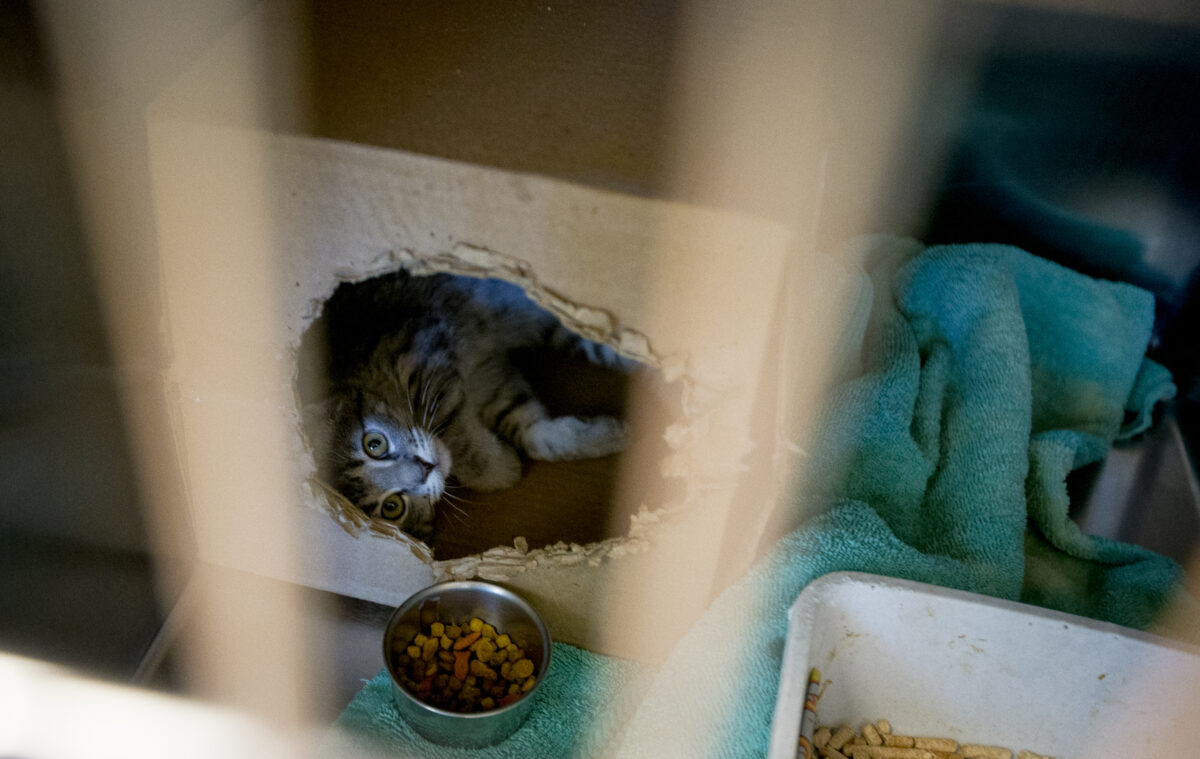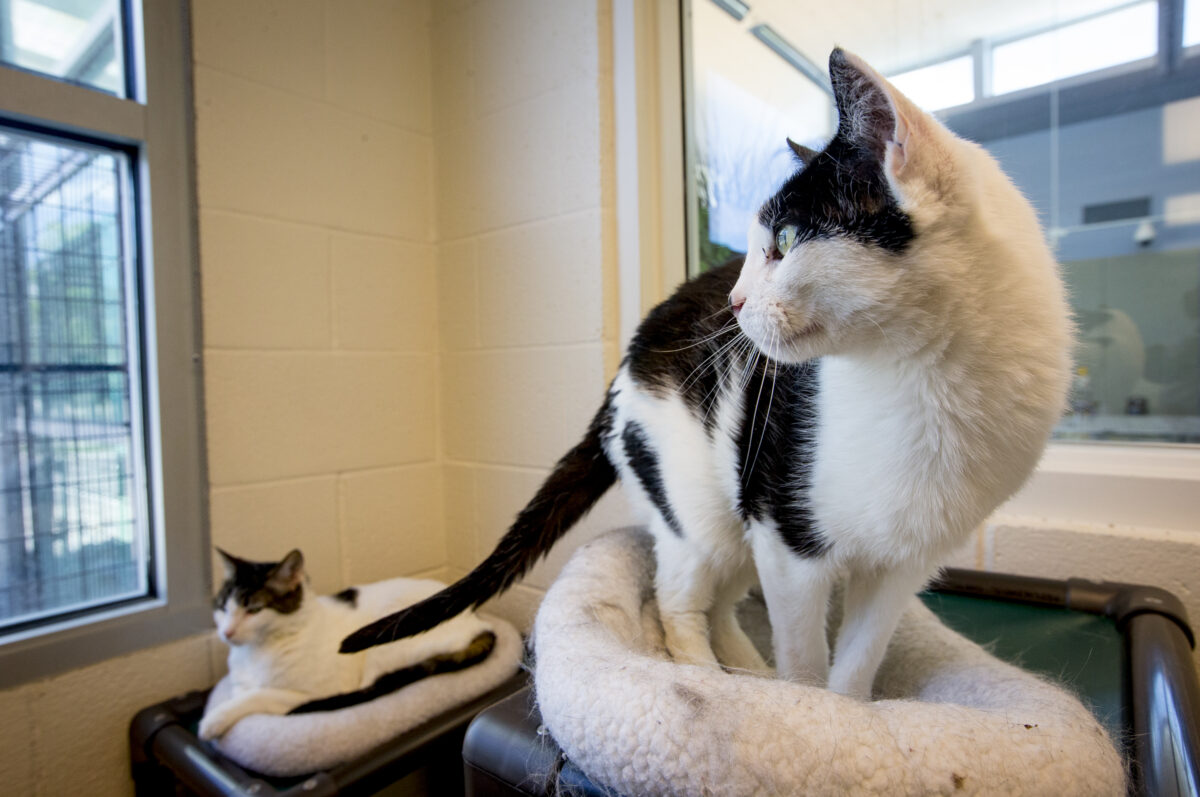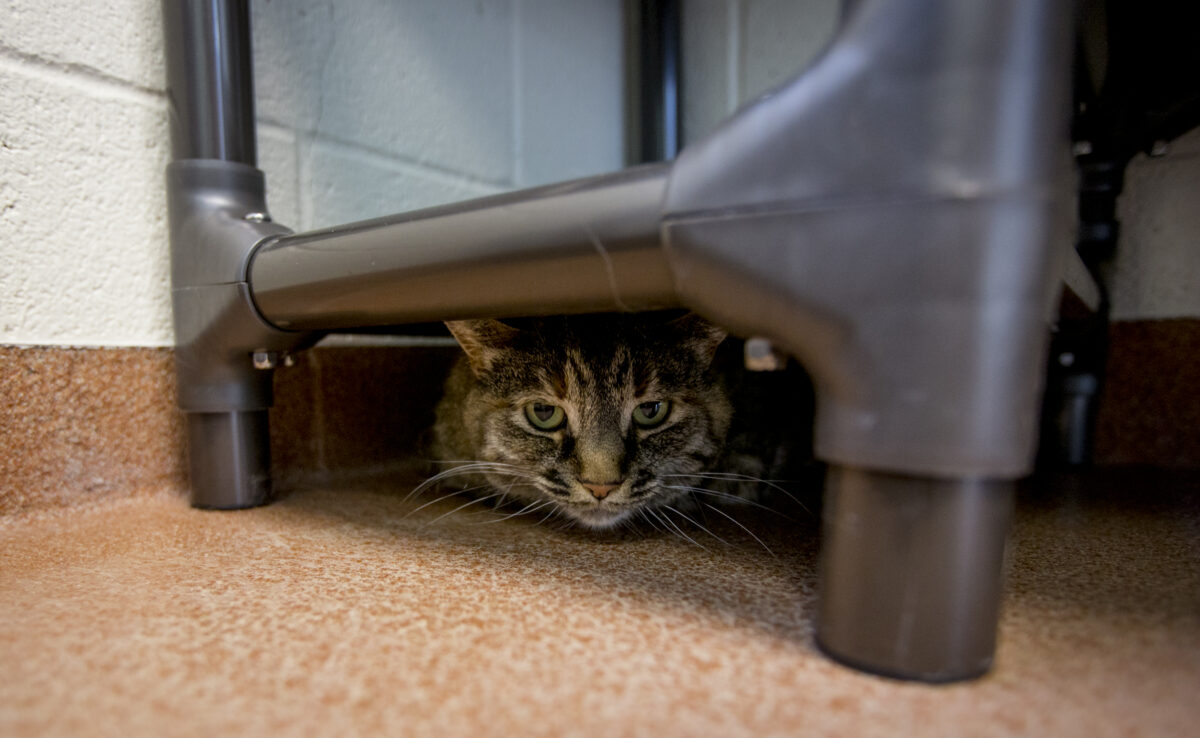Why does Utah County have the highest animal euthanasia rates in the state?
Four out of every 10 cats brought into Utah County’s animal shelters are killed, according to the nonprofit Best Friends Animal Society.
Every other major county in Utah has already successfully implemented a program that has shown major success in improving survival statistics for cats.
Why is Utah County behind the curve?
Utah County animal shelters’ handling of feral cats
The state’s save rate for dogs and cats at the end of 2018 was 85.2%; Utah County’s? 73.2%. The county has the largest lifesaving gap in Utah — it would need to save 1,290 additional animals in 2019 in order to reach a 90% save rate, which is considered to be a no-kill rate, as typically around 10% of animals that come into the shelter need humane euthanasia for extreme health or behavioral issues, according to Best Friends Animal Society and public information requests.
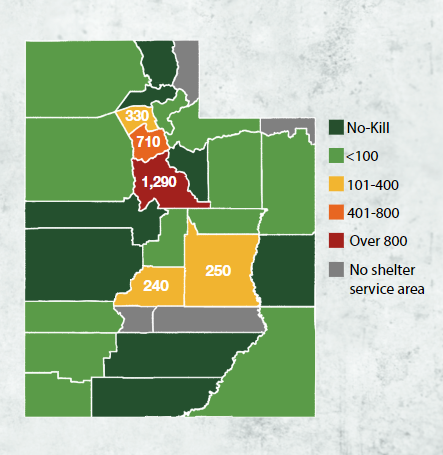
Courtesy No-Kill Utah/Best Friends Animal Society Utah
This graphic depicts the numbers in each county that indicate the estimated additional number of dogs and cats who need to be saved in the coming year for that county to reach no-kill a 90% save rate.
The county with the next biggest lifesaving gap is Salt Lake, with 710 more lives to go to reach 90%.
Cats are at a much higher risk than dogs. In fact, Utah and even Utah County crossed the 90% save rate threshold for dogs alone several years ago.
Utah County’s two shelters are special service districts: South Utah Valley Animal Shelter, or SUVAS, serves areas Provo and southward, while North Utah Valley Animals Shelter, or NUVAS, serves areas Orem and northward. Both are coalition members of No-Kill Utah, Best Friend’s campaign to help Utah shelters save more animals.
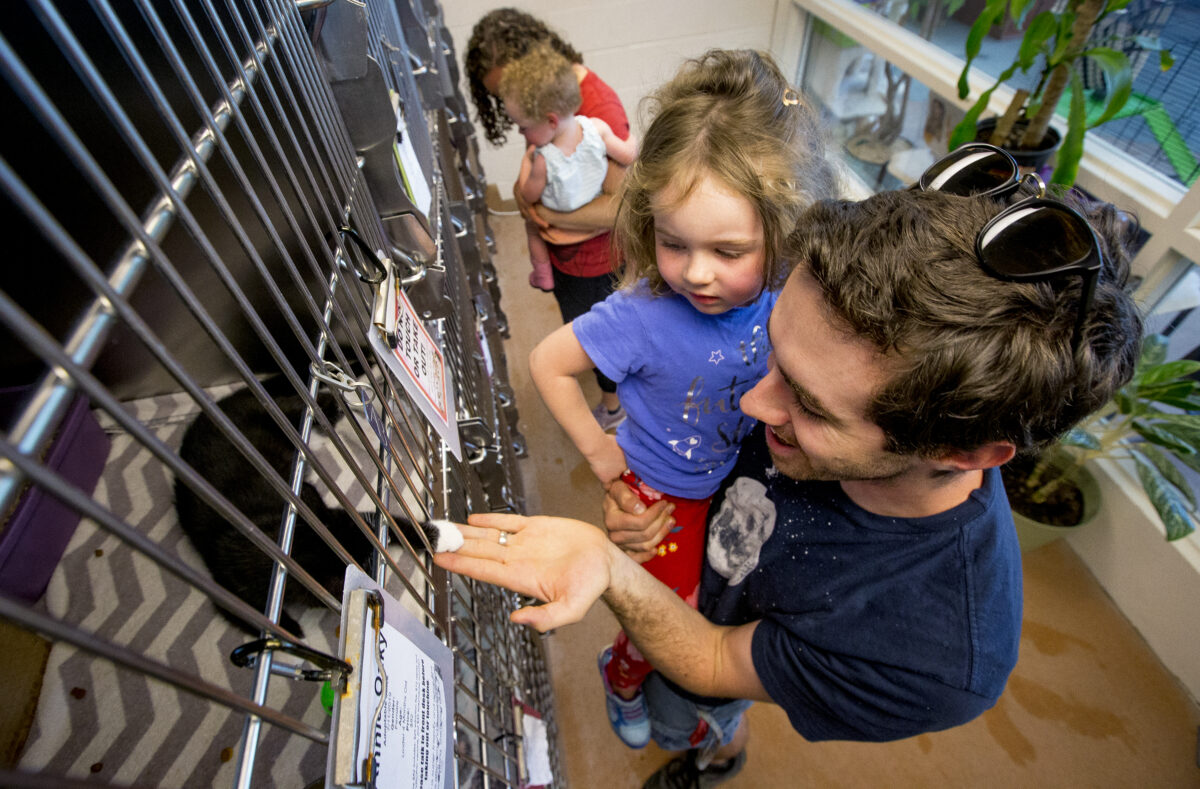
Isaac Hale
A cat greets Kimball Hill as he holds his daughter Adah, 4, and his wife Charlotte holds their daughter Lydia, 1, all of Orem, while they check out cats available for adoption Friday, July 12, 2019, at the North Utah Valley Animal Shelter in Lindon. Isaac Hale, Daily Herald
“When you look at the numbers across the rest of Utah, those relationships have been hard-fought, but they have been forged. They continue to be improved,” said Arlyn Bradshaw, Mountain West regional director for Best Friends. “Unfortunately, it’s not happening in Utah County.
No-Kill Utah’s work in the state
No-Kill Utah is a coalition of 57 partner organizations in the state, including NUVAS and SUVAS. Its ultimate goal is to make Utah a no-kill state by 2020, with each county reaching a 90% save rate. The campaign’s philosophy is that no-kill is not just achievable and sustainable, but should be a goal of animal welfare everywhere.
“Cats enter the shelter from the community, and then they’ll stay in the shelter for a five-day hold, and then they’ll be killed in the shelter because there’s no alternative for them.”
– Lydia Lasalle, executive director of Best Friends Utah
The number of Utah shelters with a save rate of 90% went from 13 in 2012 to 30 in 2018, largely thanks to No-Kill Utah’s education and support. Best Friends defines killing a shelter animal as sending an animal to euthanization when it could have had a positive outcome, whether that’s adoption or being returned to where it was found.
“There are legitimate cases of euthanasia within a shelter,” Bradshaw said. “When it is truly a mercy for that animal, we would deem that an appropriate euthanasia, and that’s why the benchmark is 90%.”
Lydia LaSalle, executive director of Best Friends Utah program, said she’s given presentations to both SUVAS and NUVAS on what they consider the best solution for improving the shelters’ save rate: a return-to-field program for feral cats.
What’s a return-to-field program?

McKenna Park
“Cats enter the shelter from the community, and then they’ll stay in the shelter for a five-day hold, and then they’ll be killed in the shelter because there’s no alternative for them,” LaSalle said.
No-Kill Utah is pushing Utah County to adopt a return-to-field program instead, which instead takes a feral cat to be sterilized, vaccinated and ear tipped right when it’s caught, and then returned to where it was found.
Utah’s Animal Welfare Act requires shelters to hold on to all stray animals for five days before deciding what to do with them next, so that if an owner is looking for the animal, they have the opportunity to have their pet returned. Prior to 2011, the only exemption for the stray-hold was if the animal was deemed in need of humane euthanasia for extreme medical reasons.
Then, the Community Cat Act was enacted in the 2011 Legislature’s general session, which legally allows shelters to release stray cats prior to the five-day holding period to a sponsor that operates a community cat program. This act made return-to-field programs much more doable in Utah, but it does not mandate shelter participation.
The program’s sterilization aspect would help prevent overpopulation and unwanted kittens.
“Kittens are a very vulnerable population in shelters … So preventing kitten from entering shelters is really important,” Bradshaw said.
Bradshaw added that many times kittens that come into a shelter neonate are euthanized immediately because they don’t yet have the immune systems to survive a shelter environment.
“You have to recognize that the catch and kill method for free-roaming cats clearly has failed. … I think the board members in Utah County would admit that.”
Tug Gettling, director of NUVAS, said he does not believe the shelter’s current method of handling feral cats is effective.
NUVAS looking into a RTF program
“Over the years I have met with Best Friends on several occasions to discuss TNR (trap, neuter, return) programs,” Gettling said. “I have always been, and continue to be, grateful for their willingness to help.”
While No-Kill Utah has proposed the pilot program to both SUVAS and NUVAS, only NUVAS has agreed to look into it.
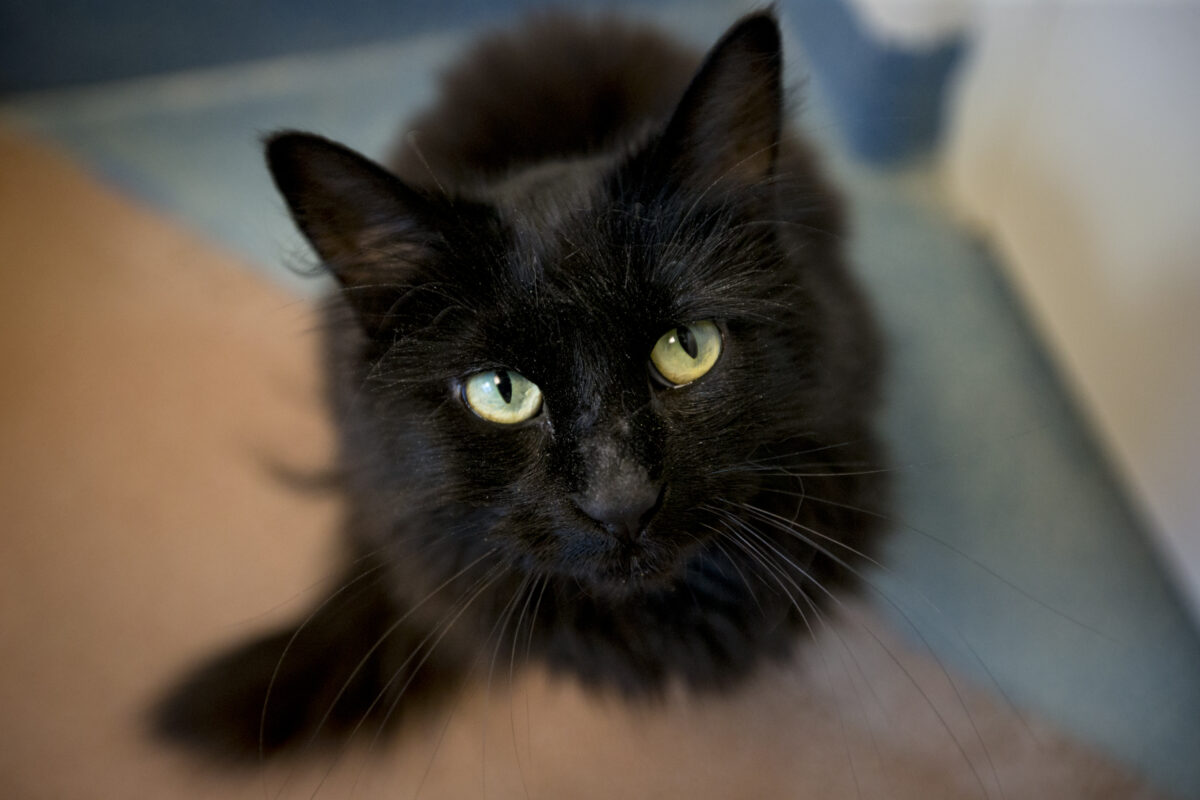
Isaac Hale
A cat available for adoption stares as it sits in its enclosure Friday, July 12, 2019, at the North Utah Valley Animal Shelter in Lindon. Isaac Hale, Daily Herald
Temma Martin, public relations specialist for Best Friends Animal Society, said her understanding is that SUVAS board members have flat-out said no to return-to-field when they proposed the program.
“I’d be happy to discuss ways to reduce animal euthanasia as long as it doesn’t include the TNR program,” said Brian Wolken, Provo Police Department captain and seven-year member of the SUVAS board, in a January letter to LaSalle. “While I understand the desire to save feral cats from euthanasia, I also have to look at other areas that may be impacted by cats.”
A representative from SUVAS told the Daily Herald that they could not comment at the time.
The NUVAS board formed a committee in May to look into adopting a return-to-field program. No decision has been made yet.
“It’s really hard for me to make a comment on where this is about to lead because we’re in the beginning stages of the research,” said Yvette Rice, a lieutenant with Utah County Sheriff’s Office and a member of the NUVAS board’s committee.
Gettling said before making any decision or recommendation on implementing the new program, they must consider the impact to the citizens within the district, to the animals in their care and to the community, plus the feasibility of success and the financial impact.
“I know sometimes people have this idea that we just go out and kill things on a whim; that’s not the case. If we can provide an opportunity to let these animals live a life unbothered and in turn they’re not making a negative impact on the community, then we would love that.”
– Yvonne Rice, Utah County Sheriff’s Office lieutenant and NUVAS board member
“The big thing is when you talk about feral cats, they tend to not have good temperaments,” Rice said. “When you look at the animal shelter and what’s brought in, in order to adopt them out, they do temperament testing to make sure they’re not dangerous to people. There’s a higher rate of euthanizing cats because of that temperament factor.”
Best Friends would provide 100% of funds during the pilot program, along with staffing, establishing a hotline and email, resident conflict resolution and mediation services, microchips and more. Its pilot programs usually last three years.
The estimated program cost once Best Friends finishes the pilot is $56,800, including salary for a full-time employee to administer program, medication, fuel and equipment. Best Friends would continue to cover vaccinations and surgeries indefinitely.
At a NUVAS board meeting on June 27, Rice discussed her committee’s approach with the rest of the board, which is comprised of other representatives from northern Utah County cities.
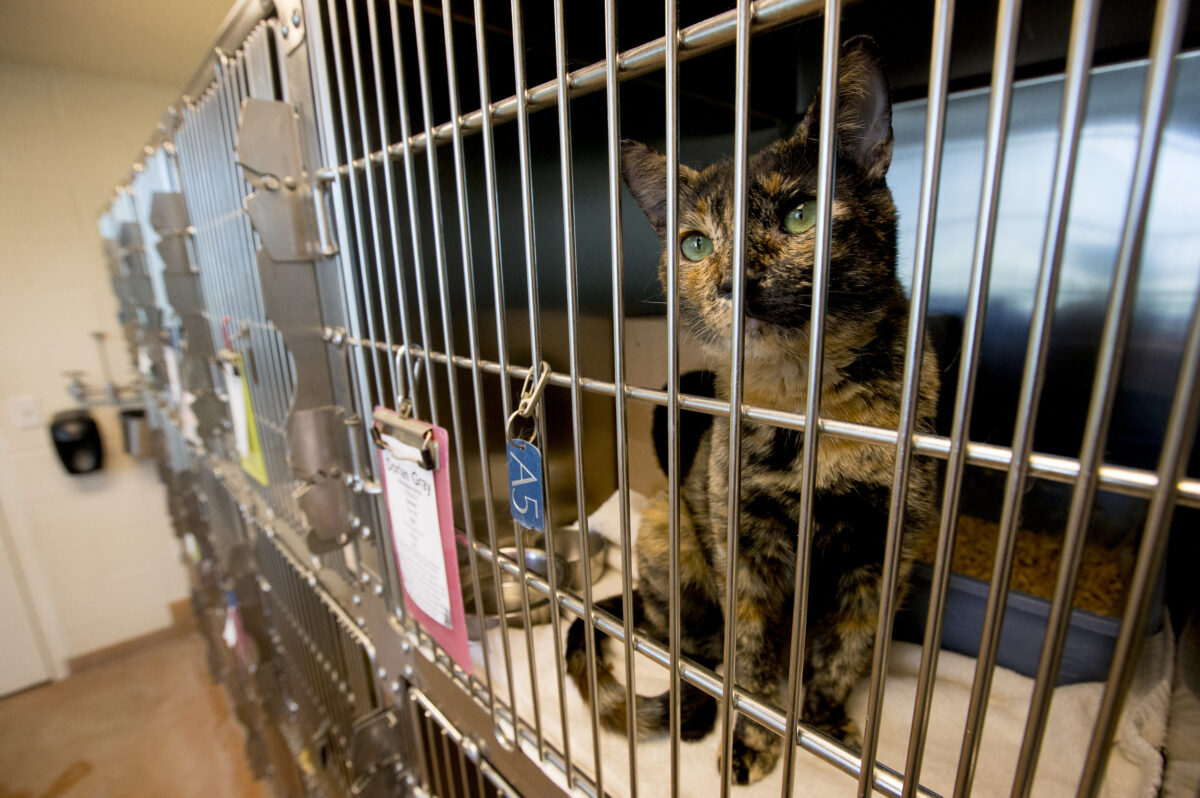
Isaac Hale
A cat available for adoption looks out of its cage Friday, July 12, 2019, at the North Utah Valley Animal Shelter in Lindon. Isaac Hale, Daily Herald
“Ultimately, we kind of feel like we want to wait to approach our governing boards for our entities until we have identified the pros and cons, if you will, so that we can lay the totality before them so that they can say, ‘OK, given all this information, we do or we don’t want to participate,'” Rice said, speaking at the board meeting. “We’re trying to provide a breakdown to each one of the board members so that they know what financially will be the impact after Best Friends pulled out.”
Rice added that there is still a lot of research and work ahead of them before they will feel comfortable going to the entities they represent and making a thoroughly-researched recommendation.
“We get that there’s apprehension,” LaSalle said of the NUVAS board. “Give it a shot. Because everything else we’ve tried hasn’t worked.”
Rice said the board wants the shelter’s euthanization rates to be as low as possible, which is why they’re considering the program in the first place.
“We’re not interested in going out and killing animals,” Rice said. “I know sometimes people have this idea that we just go out and kill things on a whim; that’s not the case. If we can provide an opportunity to let these animals live a life unbothered and in turn they’re not making a negative impact on the community, then we would love that.”
Other Utah counties’ programs
Salt Lake County, West Valley City, Taylorsville, Weber County, Davis County, West Jordan and Murray have all adopted Best Friend’s return-to-field program between 2011 and 2017, each significantly increasing their save rate to about 90%, according to Best Friends.
In 2010, Salt Lake County’s shelters had a cat intake of 4,864 and a save rate of 63%, meaning about 1,800 cats were euthanized. In 2018, eight years into the program, their cat intake was 4,073 and their save rate was 91.3%, meaning only about 354 cats were euthanized, and the shelter had surpassed the no-kill rate, according to Best Friends.
“Salt Lake County runs the biggest return-to-field program in the state of Utah, in the most dense population,” LaSalle said. “(Salt Lake’s) program show its success and answers … concerns.”
Callista Pearson, marketing and development manager at Salt Lake County Animal Services, said while visiting various neighborhoods in her county, she would see at least a dozen cats in the area.
“Now I may see one or two cats at most in this same neighborhood,” Pearson said.
Pearson said they have not seen any negative effects come from implementing the program.
“In our jurisdiction, our TNR specialist works to educate communities with these cats and help them understand the importance of TNR,” she said. “Most people are very receptive to the idea. Many people are attached to these cats and want to see them back in their neighborhood.”
Pearson said on occasion, they’ve helped relocate some community cats to other areas if complaints come in.
“It’s not always perfect, but you do see a reduction over time in that free-roaming population,” Bradshaw said. “And you absolutely see a reduction of animals entering the shelter, because animal control doesn’t impound the ear-tipped cats.”
LaSalle said West Valley adopted the return-to-field program and has enjoyed the success.
“One of the things that the operation manager said was immediately the staff moral went up, not having to kill those animals, it was huge,” LaSalle said. “(Return-to-field) is not just helping the community but helping the staff. They don’t want to do that.”
Support and opposition of RTF
Gettling said he has only received a couple of unsolicited opinions from the community, and they were all in opposition to a return-to-field program.
“I have solicited opinions from a handful of community members, which have also all been in opposition,” Gettling said. “Additionally, I have asked all of the animal control officers that we work with and they too have all been in opposition.”
LaSalle acknowledged that there are citizens who don’t want stray cats in their neighborhood.
“We’re concerned about those people as well,” she said. “But what we found, with that community, once we got talking to these individuals, most people don’t want these cats to be killed in the shelter … So you actually find a community really does want that solution, but they just don’t know about it, they’re not educated about it.”
At the June NUVAS board meeting, Rice mentioned the cons that could possibly come along with a return-to-field program.
“The impacts specifically on the environment, the kind of disease issues that we could be facing … Another big thing that played into that is consideration of: Do we bear any liability if we release an animal back into an area, if it passes on disease or damages someone?” Rice said.
She added that one of the biggest cons would be the cost of implementing the program once the Best Friends-funded pilot program is over.
Bringing Utah County to no-kill rate
“The formula to get a shelter to no-kill is not rocket science,” Bradshaw said.
While No-Kill Utah believes adopting a return-to-field program is the No. 1 way for Utah County to reach a 90% save rate, there are additional actions that can be done as well.
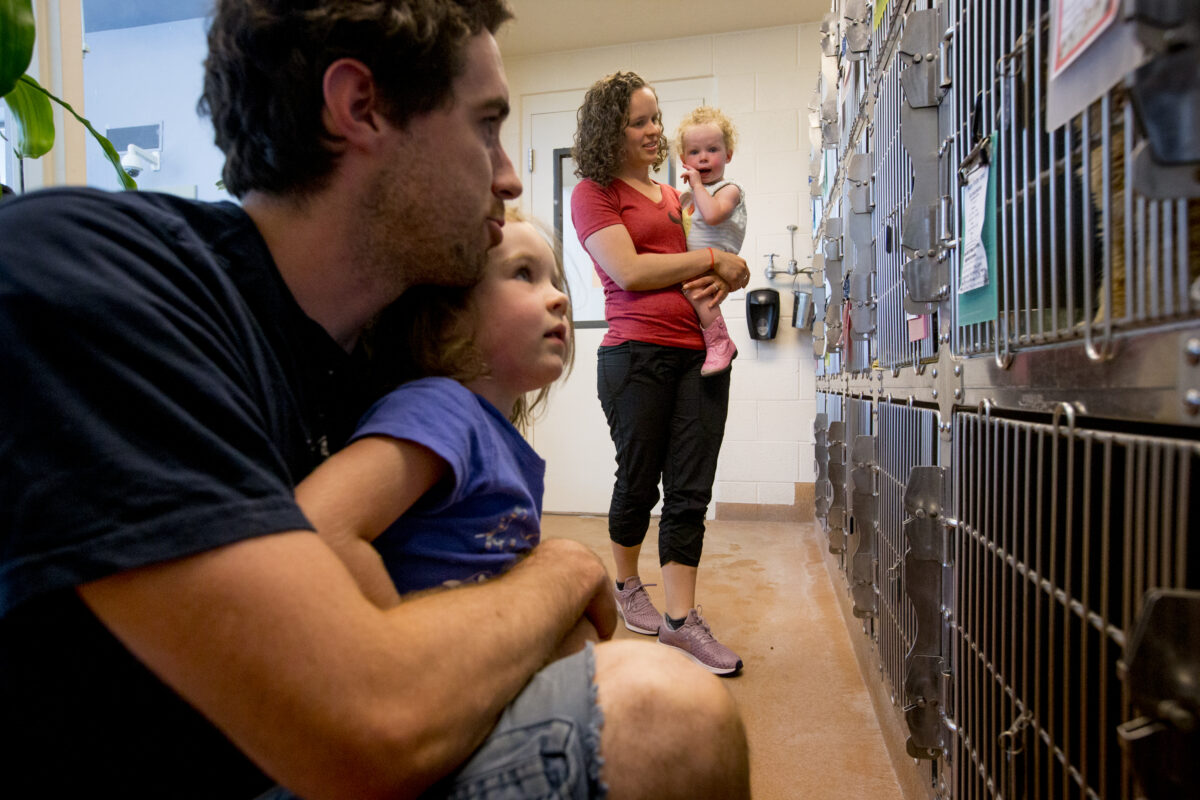
Isaac Hale
Charlotte Hill holds her daughter Lydia, 1, as her husband, Kimball, holds their daughter Adah, 4, all of Orem, while they check out cats available for adoption Friday, July 12, 2019, at the North Utah Valley Animal Shelter in Lindon. Isaac Hale, Daily Herald
“Really simple calls to action that our coalition asks of Utahns, the first is adoption. So if you want to add a pet to your family, think of your local shelter as opposed to a pet store or a breeder,” he said.
Martin added that No-Kill Utah does not consider buying from breeders or retail pet stores as lifesaving adoption, despite misuse of the term “adoption.”
Bradshaw said other calls to action include ensuring pets are sterilized, volunteering at local rescue organizations and donating money.
“We don’t blame shelters for the circumstances they’re put in. The problem is a community problem that we need to collectively work together to solve.”
– Arlyn Bradshaw, Best Friends Mountain West Regional Director
“(Citizens) are also welcome to contact anybody on the (NUVAS) board and make recommendations or voice their opinion on the matter,” Rice said.
County residents in favor of a return-to-field program should voice their opinions with local representatives, LaSalle said.
“We don’t blame shelters for the circumstances they’re put in,” Bradshaw said. “The problem is a community problem that we need to collectively work together to solve.”


